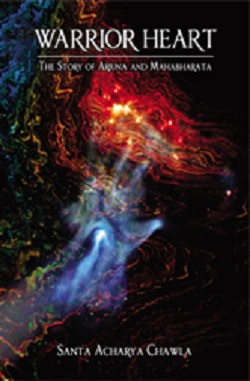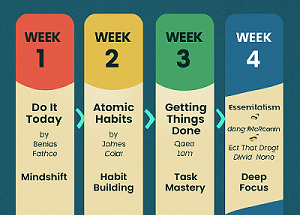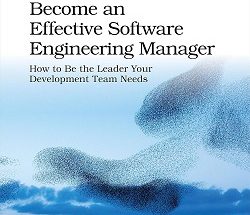There are numerous books on the epic Mahabharata in many languages and by many authors. Rare are those that narrate scientifically testable details of a timeline that blurs the traceable from the imaginary. “Warrior Heart: The Story of Arjuna and Mahabharata” belongs to this rare league. The author, Santa Acharya Chawla, treats her narrative scientifically, providing a well-researched historicity to the epic, with a captivating cover design of an image of a Pulsar wind nebula, nicknamed the ‘Hand of God.’
Warrior Heart is narrated in twenty-three chapters, six appendices, and a copious bibliography. It opens with a poignant narration of the return of the young Pandavas to Hastinapura from the mountains in an arduous journey when Kunti, the mother of Yudhisthira, Bhima, and Arjuna, the three elder Pandavas, brings back the mortal remains of her husband Pandu who perish during his conjugal union with Madri who immolates herself leaving her sons Nakula and Sahadeva under Kunti’s care. The Warrior Heart closes with the final departure of the five Pandavas with their wife, Draupadi, from Hastinapura in what has been described as Mahaprasthanain Mahabharata, climbing onto an elusive heaven in the Himalayas.
In the first few pages, the book catches the reader’s interest due to its fast-paced, simple narration in short paragraphs, seamlessly transiting from one to the subsequent events and holding readers’ attention simultaneously. The reader finds a gentle unfolding of the emotional nuances of every character. Without sacrificing the clarity of her narrative, the author places the landmark events in the context of their respective historical dates, digging deep into the constellation of stars that are documented in the original Sanskrit versions – from war in Kurukshetra to submergence of Dwarka in the Arabian sea.
The major highlight of Warrior Heart is its riveting account of the epic Kurukshetra war that lasted for eighteen days. Its account has been captured at length, elaborating on the unique war arrays (vyuhas) formed by the opposing warrior groups and how they were penetrated. Throughout the book, the protagonists display restrained, humane emotions without exaggareation. For instance, the author presents a dispassionate account of the losing gamble (Dyuta krida, game of dice) culminating in the harassment of Draupadi by the victorious Kauravas in front of the hapless Pandavas and the elderly courtiers. Her dispassionate yet flawless rendition of Kurukshetra’s epic war would keep the reader spellbound.
The author has chosen Arjuna as the central character – the architect of Pandavas’ eventual victory in this epic war. Arjuna has many weapons of mass destruction but refrains from using them against lesser enemies, counteracting opponents’ weapons with those of his own with comparable lethality, knowing well that the onus of winning the battle is on him. His restrain, continuous endeavour for knowledge and excellence, sensitivity, his inner turmoil for Draupadi, devotion to his family’s cause, and phenomenal effort to win the great battle make him a hero. Arjuna did not receive the credit and appreciation he deserved, and the final judgment of his eldest brother, Yudhisthira, finally reveals the broken heart of the warrior. The author presents an unparalleled ending invoking some of the most poignant hymns from the Upanishad.
The book is captivating, keeping the reader involved with the characters and the happenings. The quotes from original Sanskrit verses bring a whiff of the essence of the original epic and the poetic excellence of its creator, Veda Vyasa. The author’s understanding of the epic and coining the appropriate verses is praiseworthy. The analytical skill of the author, a professional scientist, is evident throughout the book. Warrior Heart is invaluable for the information collated and presented as appendices: for instance, on measurement units of the Mahabharata era, explanatory notes on each chapter, estimation of timeline of the Mahabharata and the genealogy of royal dynasties of ancient India. The author authenticates her narrative with source and references on scientific evidence, addressing many questions that the readers are likely to pose in the Appendices. A lay reader, thus, is much enlightened, enjoying the epic apart. However, it is not free from its editorial blemishes, which can be addressed later.
Warrior Heart is a must-read for anyone interested in a scientifically authenticated account of one of India’s most glorious pasts and the evolution of its humane, social, and cultural value. This book is an essential acquisition for any library to let the readers revisit its literary and historical journey into the depths of the Mahabharata.
About the Reviewer: Dr. Arati Mishra is a former Scientist at IIT Kanpur, an artist, a voracious reader of books of all genre and a narrator of literature.
About the Author: Dr. Santa Chawla (Santa Acharya Chawla) is a doctorate in Physics and a former scientist at the CSIR National Physical Laboratory, New Delhi. She has published over a hundred papers based on her research in diverse fields of Physics and has mentored many students for their theses. Her interest in the Mahabharata made her curious about the historicity of the epic. She decided to narrate the great story in all its authenticity, placing its happenings on a time scale derived from Archaeoastronomy based solely on conjunctions as described in the epic.




